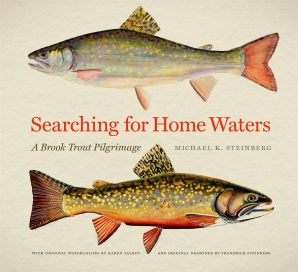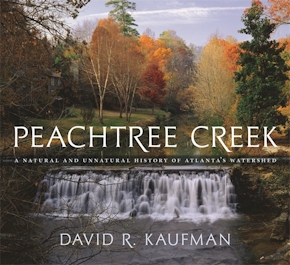George Alexander Grant is an unknown elder in the field of American landscape photography. Just as they did the work of his contemporaries Ansel Adams, Edward Weston, Eliot Porter, and others, millions of people viewed Grant’s photographs; unlike those contemporaries, few even knew Grant’s name. Landscapes for the People shares his story through his remarkable images and a compelling biography profiling patience, perseverance, dedication, and an unsurpassed love of the natural and historic places that Americans chose to preserve.
A Pennsylvania native, Grant was introduced to the parks during the summer of 1922 and resolved to make parks work and photography his life. Seven years later, he received his dream job and spent the next quarter century visiting the four corners of the country to produce images in more than one hundred national parks, monuments, historic sites, battlefields, and other locations. He was there to visually document the dramatic expansion of the National Park Service during the New Deal, including the work of the Civilian Conservation Corps.
Grant’s images are the work of a master craftsman. His practiced eye for composition and exposure and his patience to capture subjects in their finest light are comparable to those of his more widely known contemporaries. Nearly fifty years after his death, and in concert with the 2016 centennial of the National Park Service, it is fitting that George Grant’s photography be introduced to a new generation of Americans.
The national park idea owes a tremendous debt to the photographers who captured the beauty of America’s most special places, ultimately inspiring people to push for their protection. William Henry Jackson, Carleton Watkins, and Ansel Adams are the best known, but now Ren and Helen Davis finally give George Grant the attention he so richly deserves. As the first chief photographer of the National Park Service, Grant traveled ceaselessly to capture more than thirty thousand images, documenting a crucial moment when the park system underwent tremendous growth and transformation. Millions of people have seen his work without knowing his name or his story. The centennial of the National Park Service serves as good reason to rectify that.
—Dayton Duncan, producer of The National Parks: America's Best Idea
For more than two decades, George A. Grant, chief National Park Service photographer, traveled throughout this land, producing superb images of America’s most iconic scenery and historic sites, including those of the ancient past. Although little known to the public, Grant belongs in the pantheon of this country’s great landscape photographers, such as William Henry Jackson and Ansel Adams. This is Grant’s first full biography, with a gallery of his photographs—for enjoyment by your fireside or in the classroom.
—Richard West Sellars, author of Preserving Nature in the National Parks: A History
When we think of seminal American landscape photographers, we name Ansel Adams and Eliot Porter. We can now add George Alexander Grant, thanks to Ren and Helen Davis, who have reclaimed Grant's invaluable yet forgotten work as the first official photographer for the National Parks Service. . . . Two hundred breathtaking images of mountains and valleys, sand dunes and redwoods, rivers and waterfalls are handsomely presented here, pictures of technical and aesthetic sophistication and an 'understated style' that perfectly capture the magnificence of our wisely preserved wilderness areas as the National Parks Service came of age.
—Donna Seaman, Booklist
A solid sampling of Grant’s wonderful photos is organized here. . . It’s fascinating to see early 20th-century visitors’ period clothes and automobiles contrasted with the timeless environment of the locations in these over 60-year-old images. Recommended for readers interested in America’s national parks, in conservation, or in nature and wildlife photography.
—Michael Dashkin, Library Journal
When we think of photographers of the national parks, Ansel Adams will likely be the first to come to mind. . . . Yet for sheer output, no one is likely to surpass a contemporary of Adams named George Alexander Grant. . . . Though his work may be more utilitarian than that of Adams, Grant was a skilled craftsman, composing his images with care and setting his exposures to achieve the crystalline focus and bottomless depth of field that he (like Adams) favored. . . . The photos that have come down to us are valued not just for their aesthetic merit but for their historical content.
—Gerard Helferich, Wall Street Journal
While this exceptional photographer is unknown to both the general public and—to too large an extent— even specialists was due to circumstances that caused so many of his images to have only the organizational name rather than his attached, his work also departs from the kind of imagery we associate with so much great landscape photography. . . . The research behind the book, and the dedication of the authors in wresting out and identifying so many of Grant’s unattributed images, is a testament to their equal persistence and commitment. They have brought these images to light, gathered them in one place for us, and we can see how our National Parks became what they are now. Grant was a superb photographer, dragging his large format camera around, and both his sharp eye and his compositional gifts are on full display as we look through the over 150 images presented to us. . . . [T]his handsome volume can be appreciated by a very wide audience.
—David M. Sokol, Journal of American Culture



